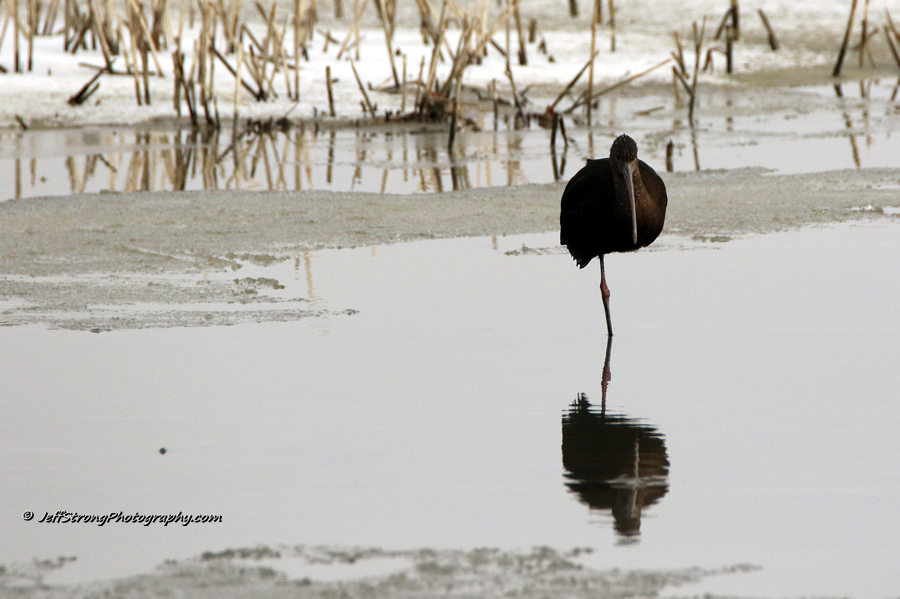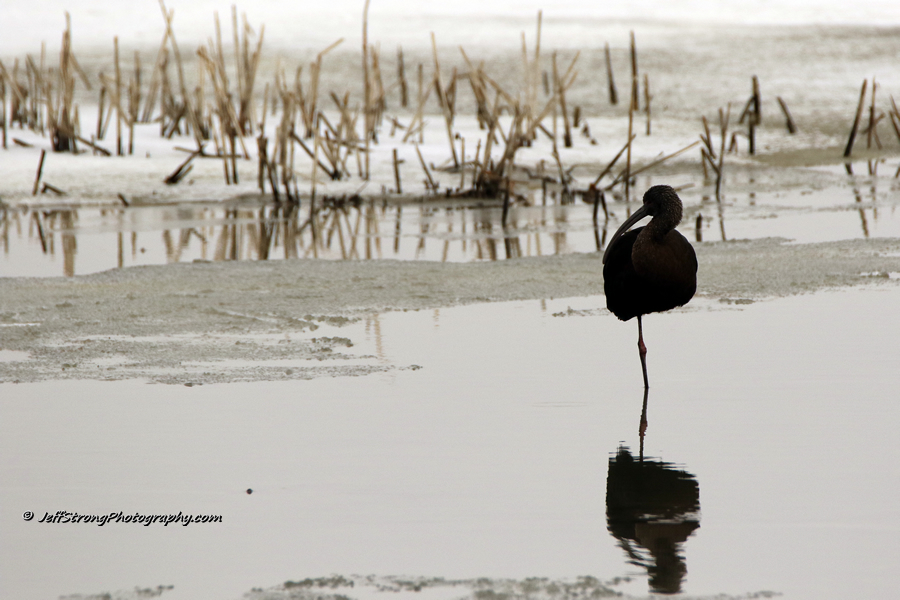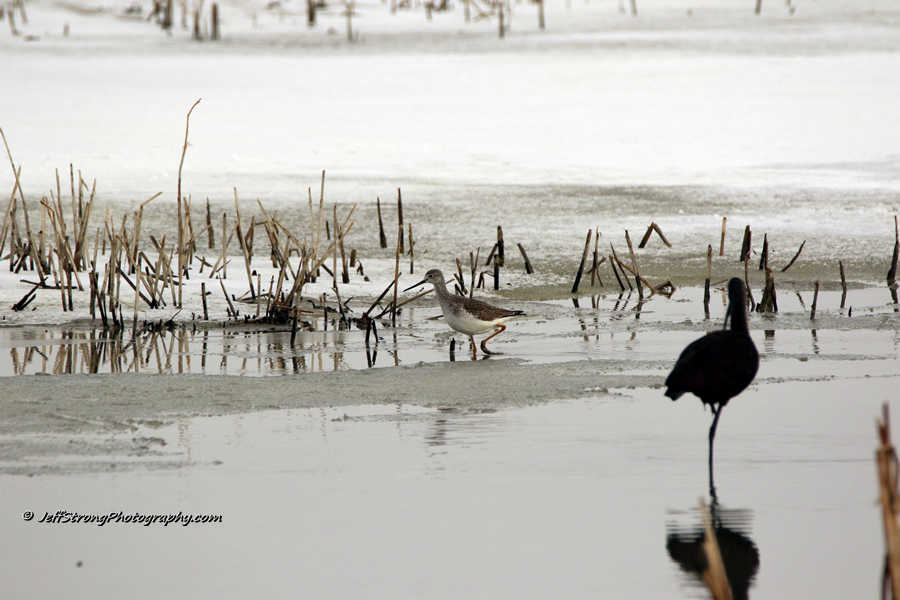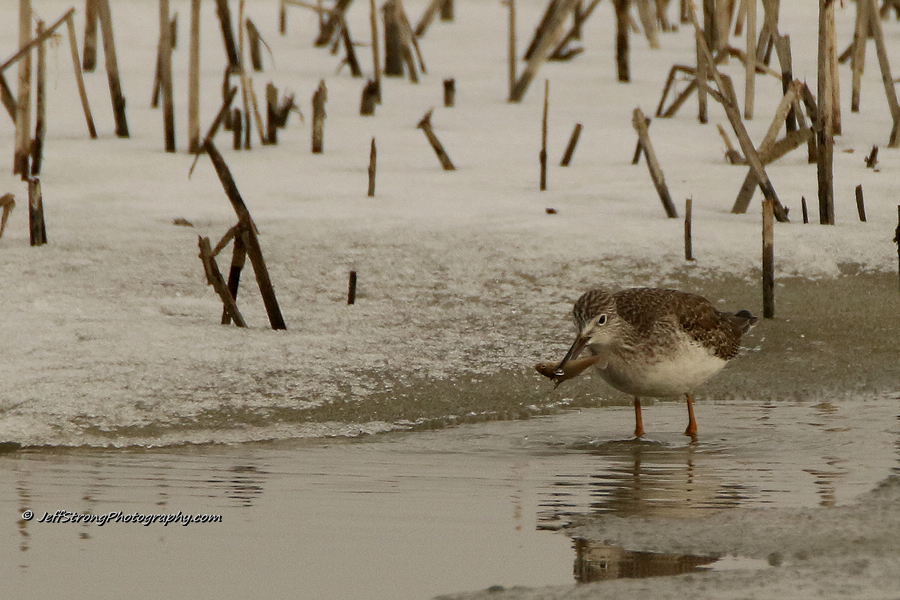Yesterday I had a few minutes to spare so I headed to one of my favorite spots for bird watching, the Bear River Migratory Bird Refuge. It is located in the far reaches of northern Utah where the bear river empties into the Great Salt Lake.
Made up of thousands of acres of marsh and upland habitat, the refuge offers food and sanctuary for hundreds of species of migratory and resident birds.

One of those birds which call the Bear River Migratory Bird Refuge home for part of the year is the white-faced ibis, a late arrival in spring and a fairly early departing bird in the fall as well.
In fact, when I see my first white-faced ibis in the spring I know warmer weather is close at hand. This particular species of bird doesn’t seem to enjoy the cold wet weather of late fall and winter and is usually gone a couple months before we can even begin to talk about freeze-up.

Yesterday, however, I found a white-faced ibis on the partially frozen refuge. I have never seen one in this setting before. The sheets of ice and snow made the dark-colored bird seem to be quite out of place.
I sat and pondered if this was a very early arrival due to the unusually warm winter we have been experiencing or was it a late migrant that never left the refuge and decided to tough it out on the refuge for the winter.

Another strange find happened as I was watching the white-faced ibis. The second bird pictured behind the ibis is also a head-scratching puzzle this time of year on the bird refuge. Now I am here to confess my bird identification skills do have quite a few holes in it.
I have numerous books and two apps on my phone but it is still a struggle for me but I will take a leap of faith and make an educated guess and call it a greater yellowlegs for the sake of this post.
From my birding resources, the greater yellowlegs is a migrant to this neck of the woods. It nests in far northern Canada and winters in Mexico so to find one in this region this time of year in such harsh conditions causes me to wonder if this is also an early migrant due to the mild temps we have been having.
A friend down south in Phoenix Arizona actually told me the past week as has been unusually warm even for Arizona with it hitting the mid 70’s for daytime high temperatures.

The greater yellowlegs gave me something else to scratch my head about. It picked up a very small fish from the icy water and swallowed it whole.
I had no idea they would eat small fish as I think of them as birds that poke around the mudflats and shallow waters for small invertebrates and aquatic insects.
This was such an unusual sight to behold but after reading a bit about the yellowlegs I learned they do feed on small fish. The day was extremely foggy and was coupled with very low hanging clouds so the images are a bit soft but they do serve the purpose of documenting these strange winter visitors on the refuge.

Much of my time throughout the year for both bird watching and photography is spent on the Bear River Migratory Bird Refuge. I highly recommend it to anybody, both serious birders and the casual bird watchers alike who, like me, just love birds.
With spring inching closer each day the best time to visit the refuge is March and April but as you can see anytime on the refuge can be an exciting time as it was for me seeing two birds not often seen on the refuge in mid-January.



